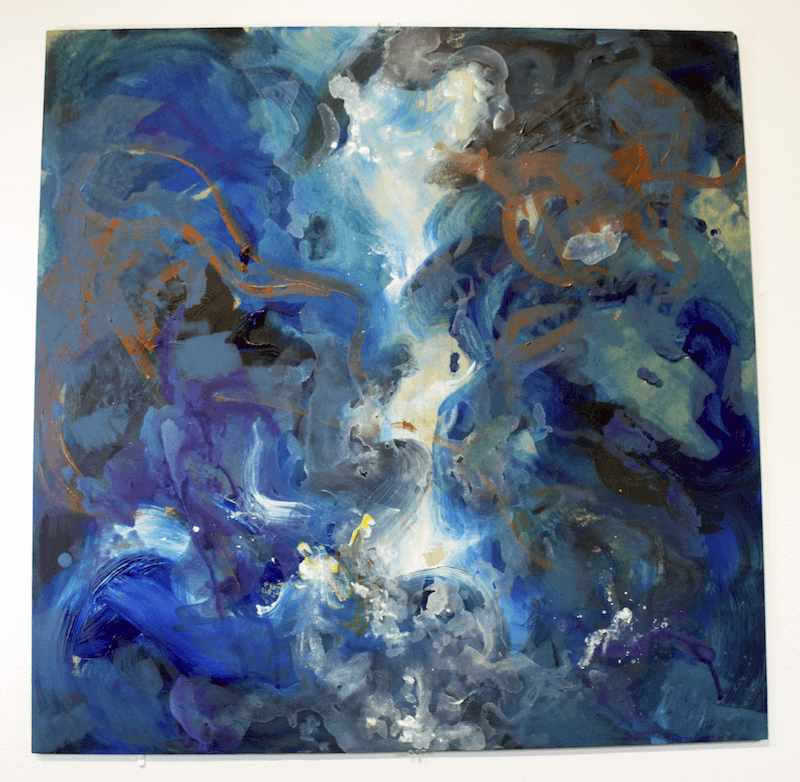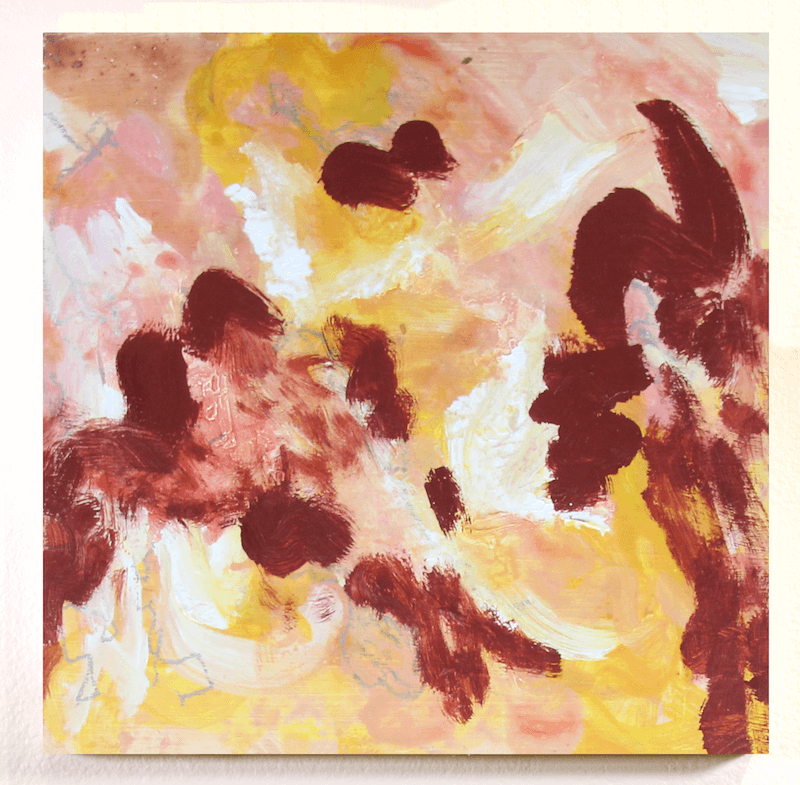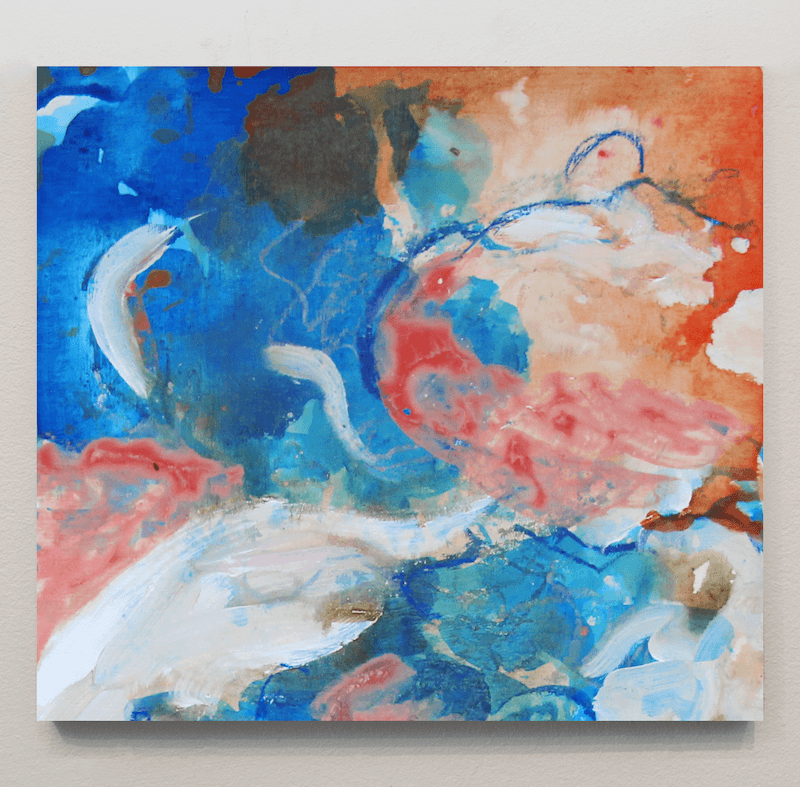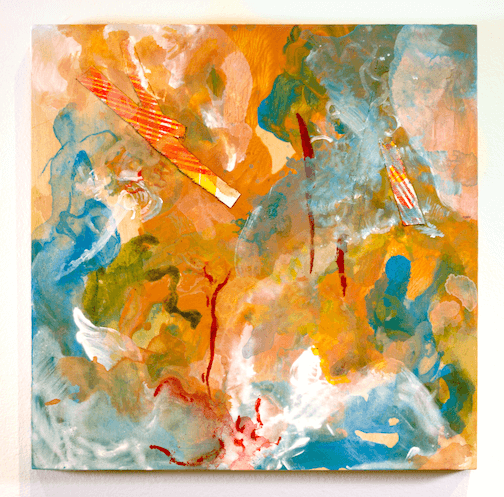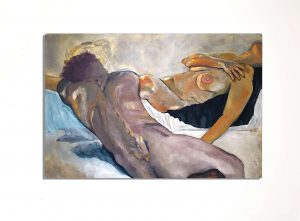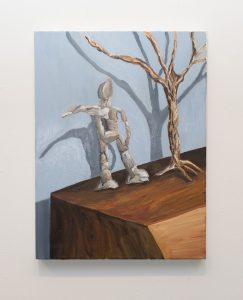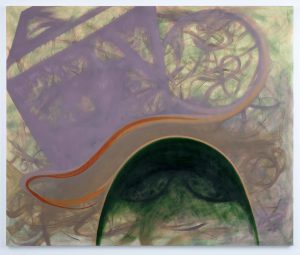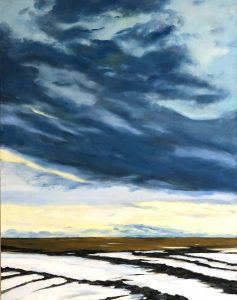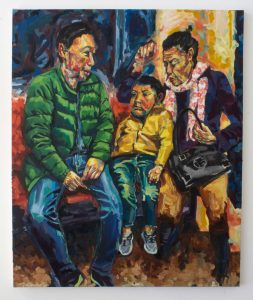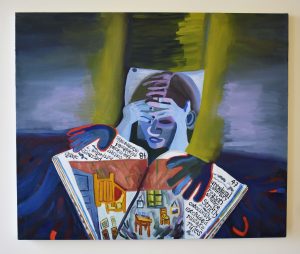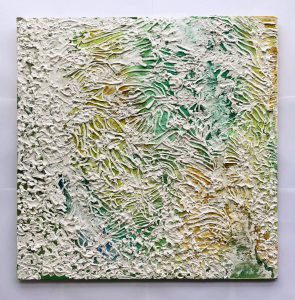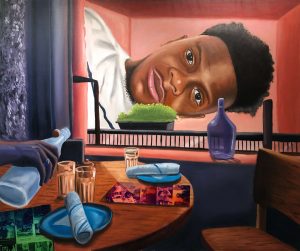My five senses make noisy neighbors. Competing sensory experiences wrestle for my attention and their contests guide my emotional state. This complex push and pull between my external and internal worlds drives my artistic practice. A scent suggests a taste, which evokes a memory, tinged with colors — like the blue willow dinner plates from my childhood home, that transformed into a romantic fairy tale in my young imagination. The fusion of what I feel and what visual, or other sensory information my senses give me, spurs me forward to try to capture this amalgamation.
In my work I attempt to both surrender to, yet employ control over, the slippery medium of paint to reflect the fluidity of my sensory experiences. Beginning with an automatic or intuitive placement of line or color, I conjure and make visible phrases of music and memories, and evoke overlooked interplays of color, light, and texture that I notice in everyday life. Then I step back to determine what kind of specific narrative the color fields or tangled lines suggest to me. In this way, intuitive interactions of color and automatic drawings become characters ready to be sent on stage, telling the story plucked from my unconscious. This interplay between the intuitive and the rational balances my process. I have to come to understand that the expressive, quasi-automatic, and snarled nests of line-drawings represent the coiled energy of a highly emotive personality, both spotlighted and suppressed by veils of gauzy color. It is a conversation at last between my sensory self and my reasoning self, with both sides equally heard. I have come to turn my noisy neighbors into a complex dialogue with the outer world.
I am not the first artist to think of mark-making as an external reflection of internal experience. Sam Gilliam wished to use color to represent the feeling and improvisational nature of jazz music and Melissa McCracken uses painting to share with us her sense of synesthesia. Lee Krasner made paintings so revealing of her complex emotional states, that they frightened her, while Rachel Niffenegger’s psychologically intense works simultaneously entice and revolt her viewers. I see myself as very much a part of the same tradition.


